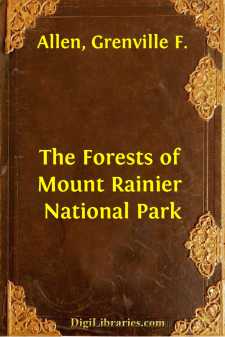Categories
- Antiques & Collectibles 13
- Architecture 36
- Art 48
- Bibles 22
- Biography & Autobiography 813
- Body, Mind & Spirit 142
- Business & Economics 28
- Children's Books 15
- Children's Fiction 12
- Computers 4
- Cooking 94
- Crafts & Hobbies 4
- Drama 346
- Education 46
- Family & Relationships 57
- Fiction 11828
- Games 19
- Gardening 17
- Health & Fitness 34
- History 1377
- House & Home 1
- Humor 147
- Juvenile Fiction 1873
- Juvenile Nonfiction 202
- Language Arts & Disciplines 88
- Law 16
- Literary Collections 686
- Literary Criticism 179
- Mathematics 13
- Medical 41
- Music 40
- Nature 179
- Non-Classifiable 1768
- Performing Arts 7
- Periodicals 1453
- Philosophy 64
- Photography 2
- Poetry 896
- Political Science 203
- Psychology 42
- Reference 154
- Religion 513
- Science 126
- Self-Help 84
- Social Science 81
- Sports & Recreation 34
- Study Aids 3
- Technology & Engineering 59
- Transportation 23
- Travel 463
- True Crime 29
The Forests of Mount Rainier National Park
Description:
Excerpt
The remarkable development of the forests about the base of Mount Rainier results from climatic conditions peculiarly favorable to tree growth. The winters are mild and short. The ocean winds that pass through the gaps of the Coast Range are laden with moisture which falls in the form of rain or snow on the west slope of the Cascades. The trees are nourished by this moisture through a long season of annual growth, and form an evergreen forest which is, in some respects, the most remarkable in the world. This forest, distinguished by the extraordinary size and beauty of the trees and by the density of the stand, extends into the deep valleys of the rivers which have their sources in the glaciers. On the dividing ridges and in the upper stream basins the composition and character of the forest change with the increasing severity of the climate.
The distribution of the different species of trees according to the intervals of altitude at which they occur separate the forests of the Mount Rainier National Park into different types. The lines of separation are to some extent also determined by complex conditions of slope, exposure, and moisture. The successive forest belts are uniform in the composition of their central areas, but blend and overlap where they come together.
The low valleys of the main and west forks of White River, of the Carbon, the Mowich, the Nisqually, and the Ohanopecosh are covered with a dense and somber forest of fir, hemlock, and cedar. The trees, pushing upward for light, are very tall and free from limbs for more than half their height. Their tops form a continuous cover which the sunshine rarely penetrates, and on which the light snows of early winter fall and melt, without reaching the ground. Even in midsummer the light is soft and shaded, and the air cool and humid. In the wintertime the young growth is sheltered from wind and the severity of the cold is tempered by the protecting mountain ranges. Saved from fire by the uniform dampness of the air the trees grow until they decay and fall from old age. They are succeeded by the suppressed younger trees. The forest remains mature, not uniformly sound and vigorous, yet not decreasing as a whole in size and volume. Individuals perish, but the character of the forest is constant. The deep alluvial soil covered with moss and decayed vegetation nourishes a luxuriant tangled undergrowth of vine maple, willow, and devil's-club. The forest floor is covered with a deep layer of decayed vegetation and is encumbered with fallen and mossy logs and upturned stumps. The explorer who leaves the trails must be a strong and active man if he can carry his pack 6 or 8 miles in a long summer day.
Ascending from the river bottoms to the lower slopes of the dividing ridges the forest becomes more open and the trees are smaller. Salal, Oregon grape, and huckleberry bushes take the place of the taller undergrowth of the valleys. Up to 3,000 feet the Douglas fir and the hemlock still are the dominant species. Above this altitude new species are found intermingled with the trees typical of the lowland, but forming a distinct forest type. The noble and amabilis fir appear, sometimes growing in pure stands, but more often associated with the Douglas fir and western hemlock at the lower limits of the type, and with alpine fir and mountain hemlock at the upper limit.
Nearly all the trees of this type have deep and wide-spreading roots which serve to hold in place the surface deposit of volcanic pumice which covers the slopes of the mountain. Evidence afforded by the after effects of forest fires in other parts of the Cascades indicates that the destruction of the forest on the mountain sides is followed by erosion. Heavy rains and the melting of the upper snow banks by warm Chinook winds combine to produce a surface run-off that denudes the steeper declivities down to the underlying bedrock....


